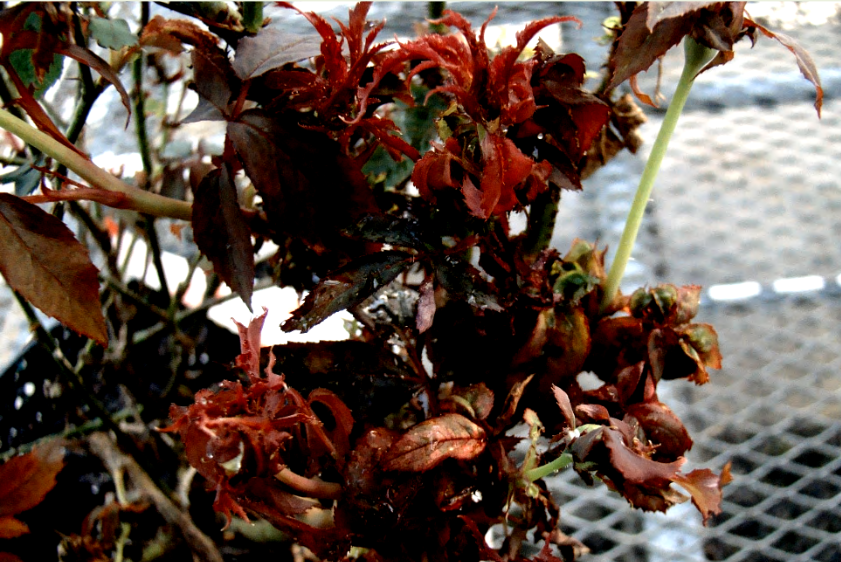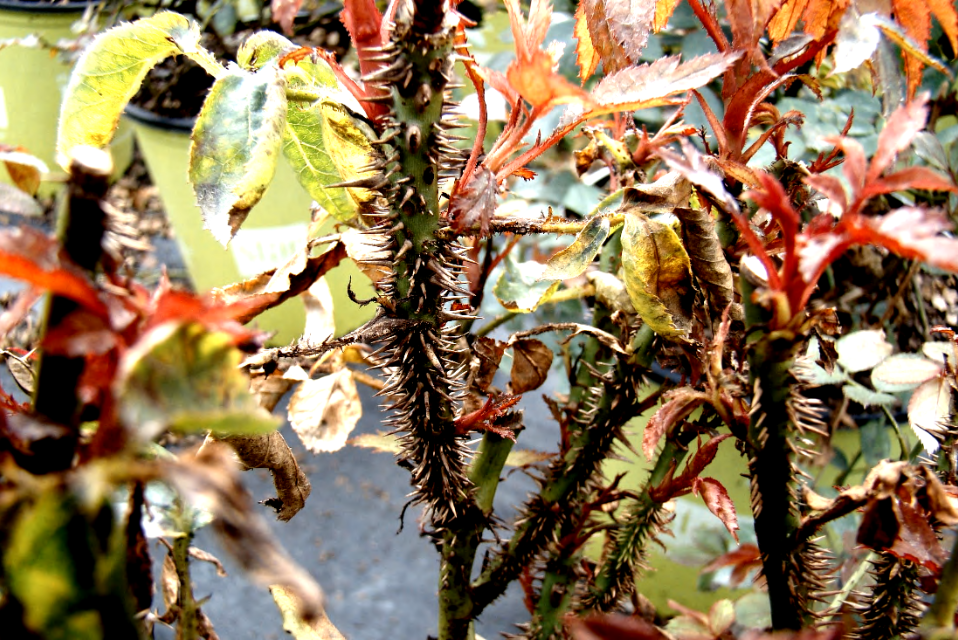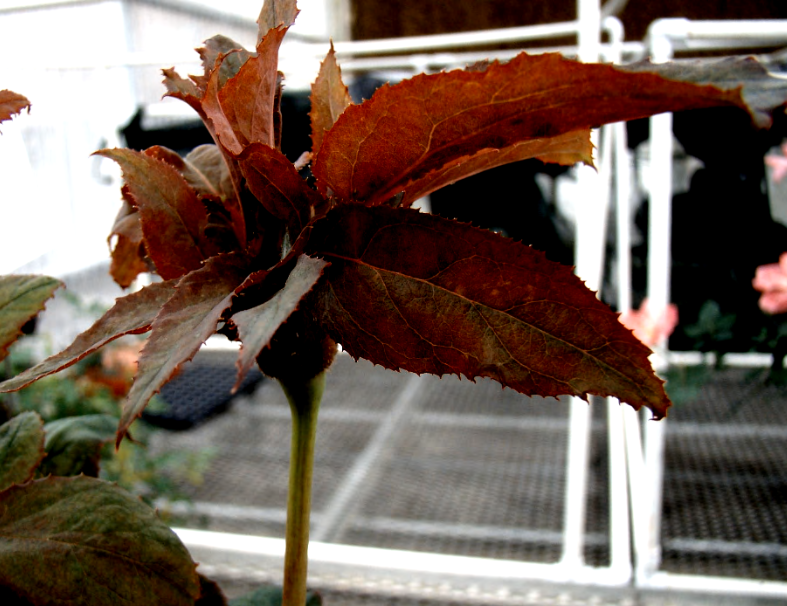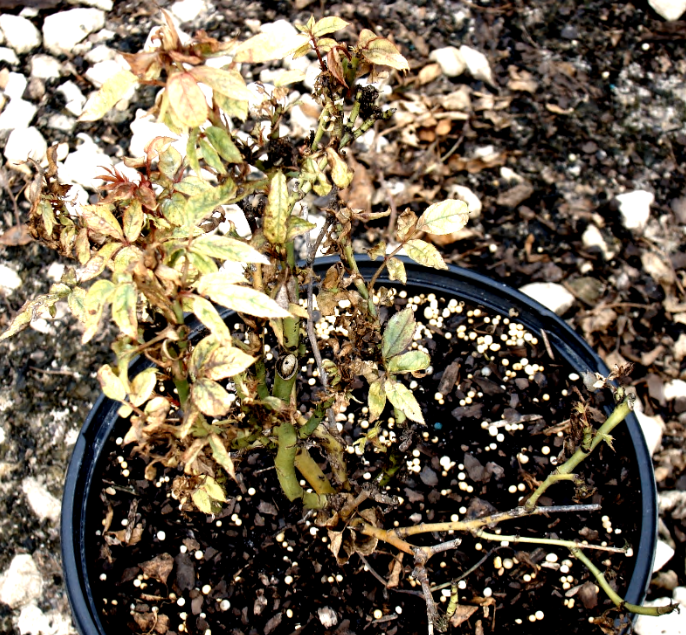
Roses are one of the most popular flowering shrubs in U.S. with a total wholesale value of 194 million U.S. Dollars. Among the major states in U.S., Florida is the fourth largest producer of roses with a total value exceeding 20 million U.S. Dollars. Among the major diseases on roses, Rose Rosette Disease caused by Rose Rosette Virus (RRV), an Emaravirus has been a major problem for roses in many states in the U.S during the last many years. This virus is spread by an eriophyid mite species Phyllocoptes fructiphilus. This disease was not present in Florida until November 2013, when the disease was first discovered and now confirmed in 3 Florida counties, which include one in the Panhandle.

The key symptoms for Rose Rosette Disease include witches’ broom, excessive thorns, abnormal red discoloration of shoots and foliage, distorted leaves and deformed buds and flowers (click the link below for symptoms). The diseased plants usually die in 1-3 years. Considering the economic importance of the rose plants, and the highly destructive nature of the Rose rosette virus, research is currently underway by scientists at the University of Florida and the Division of Plant Industry-FDACS to develop early detection methods for the virus and management practices. This project is funded by Florida Nursery Growers and Landscape Association, and the University of Florida, IFAS Dean for Research.


How Should Nursery Growers Respond:
-
Routine scouting and early identification. Submit samples for definitive confirmation.
-
Destroy infected plants. There is no cure for rose rosette disease. Detection will prompt a quarantine by DPI until cleaned up.
-
Eriophyid mite management in early spring, rotating insecticides with different modes of action.
Note: The Eriophyid mite species described as the vector for RRV is not known to be present in Florida. Thus mite management recommendations are protective in nature.
Further details can be found in the links below.
Fact Sheets:
 0
0
